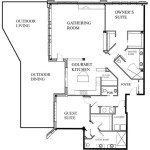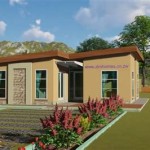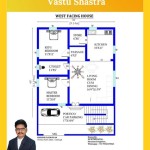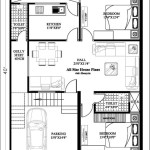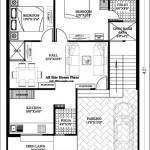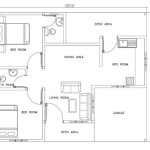Conex Box Home Plans: A Comprehensive Guide
Conex box home plans have emerged as a viable alternative in the housing market, offering a combination of affordability, sustainability, and design flexibility. These plans leverage the inherent strength and modularity of shipping containers to create residential structures that can range from small cabins to multi-story dwellings. Understanding the intricacies of Conex box home plans is essential for anyone considering this building method.
Shipping containers, also known as intermodal containers or ISO containers, are standardized steel boxes originally designed for efficient transportation of goods across the globe. Their robust construction allows them to withstand harsh weather conditions and repeated handling, making them a durable building material. The widespread availability of used shipping containers at relatively low prices has further fueled the interest in Conex box construction.
Key Considerations When Evaluating Conex Box Home Plans
Before embarking on a Conex box home project, several critical factors need careful evaluation. These considerations directly impact the overall cost, efficiency, and structural integrity of the final dwelling.
Structural Integrity and Modifications: Shipping containers are designed to bear loads vertically, primarily at their corners. Cutting large openings for doors and windows can compromise the structural integrity of the container. Conex box home plans must address this issue through reinforcement strategies, such as welding steel beams or columns around openings. Structural engineers play a vital role in ensuring that the planned modifications meet local building codes and maintain the container's stability. The extent of modifications also affects the cost, with more complex designs requiring more extensive welding and reinforcing work. Properly executed plans will account for the existing load-bearing points of the container itself to make efficient use of materials and create structurally sound openings where desired.
Insulation and Climate Control: Steel is an excellent conductor of heat, which means that Conex box homes can become extremely hot in warm climates and very cold in cold climates. Insulation is therefore paramount for creating a comfortable and energy-efficient living space. There are several insulation options available, each with its own advantages and disadvantages. Spray foam insulation provides excellent thermal resistance and air sealing but can be more expensive. Batt insulation is a more affordable option, but requires careful installation to prevent air gaps. Panel insulation like rigid foam boards offers good insulation value and are also relatively easy to work with. The choice of insulation will depend on the climate, budget, and desired level of energy efficiency. Furthermore, ventilation systems, including proper placement of windows and exhaust fans, are crucial for managing humidity and preventing condensation within the container.
Permitting and Building Codes: Navigating the permitting process for Conex box homes can be challenging, as building codes may not explicitly address this type of construction. Local municipalities may classify Conex box homes as either modular homes or as conventional construction, depending on the specific design and modifications. Thorough research into local building codes and zoning regulations is essential before purchasing containers or finalizing plans. Engaging with local building officials early in the process can help identify potential issues and ensure that the project meets all necessary requirements. Some jurisdictions may require structural engineering reports, energy efficiency calculations, and inspections throughout the construction process. Plans must be designed to meet all applicable code requirements related to fire safety, structural stability, and accessibility, if applicable. It may be necessary to acquire written interpretations of the local code from the jurisdiction's official to ensure all standards are being met.
Analyzing Different Types of Conex Box Home Plans
Conex box home plans can be categorized based on several factors, including size, layout, and the number of containers used. Understanding these different types of plans allows prospective homeowners to choose a design that best suits their needs and budget.
Single Container Homes: These plans typically utilize one or two shipping containers to create a small living space, ranging from a tiny house to a small cabin. Single container homes are often the most affordable option, as they require minimal modifications and are relatively easy to transport and install. The layout of a single container home is typically linear, with rooms arranged along the length of the container. Due to the limited space, careful planning is essential to maximize functionality. Features such as built-in furniture, multi-purpose spaces, and efficient storage solutions are common in single container homes. These are often ideal for smaller households or those seeking a minimalist lifestyle.
Multi-Container Homes: These plans involve combining multiple shipping containers to create larger and more complex living spaces. Multi-container homes offer greater design flexibility and can accommodate larger families or those who desire more spacious rooms. The containers can be arranged in various configurations, such as side-by-side, stacked vertically, or arranged in an L-shape or U-shape. Multiple containers can be combined to create open-plan living areas, multiple bedrooms, and larger kitchens and bathrooms. The structural considerations for multi-container homes are more complex than for single container homes, as the containers need to be properly connected and reinforced to ensure structural stability. Such plans benefit greatly from professional design, often by an architect or design professional with experience in container structures.
Hybrid Conex Box Homes: These plans combine shipping containers with traditional building materials, such as wood, concrete, or steel framing. Hybrid homes offer a balance between the affordability and sustainability of container construction and the design flexibility of conventional building methods. For example, containers might be used for the core structure of the home, while traditional framing is used to create extensions or custom features. Hybrid plans can be particularly useful for overcoming limitations associated with container dimensions or for integrating specific design elements that are difficult to achieve with containers alone. The integration of different materials requires careful planning and coordination to ensure compatibility and structural integrity. Such plans may require multiple layers of inspection and adherence to more strict codes.
Evaluating the Cost Implications of Conex Box Home Plans
The cost of building a Conex box home can vary significantly depending on several factors, including the number of containers used, the extent of modifications, the location of the project, and the choice of finishes. While Conex box homes are often perceived as being more affordable than traditional construction, careful budgeting and planning are essential to avoid unexpected costs.
Container Costs: The cost of shipping containers varies depending on their condition, size, and location. New containers are generally more expensive than used containers, but they may require less preparation and maintenance. Used containers can range from "wind and water-tight" (WWT) to "as-is" condition. WWT containers are typically in good condition and suitable for building purposes, while "as-is" containers may require extensive repairs or may only be suitable for non-structural applications. The cost of transporting containers to the building site can also be a significant expense, particularly for remote locations. It is crucial to inspect containers thoroughly before purchase to identify any hidden damage or structural issues. Rust, dents, and damaged floors can all add to the overall cost of the project if not adequately addressed.
Modification Costs: The cost of modifying shipping containers can vary widely depending on the complexity of the design. Cutting openings for doors and windows, reinforcing the structure, and adding insulation all add to the overall cost. Hiring skilled welders and fabricators is essential to ensure that the modifications are performed correctly and meet building code requirements. The cost of plumbing and electrical work can also be significant, particularly if the design includes complex systems or requires extensive rerouting of utilities. Interior finishes, such as drywall, flooring, and cabinetry, can also add to the overall cost of the project. Careful planning and material selection can help to control modification costs. Obtaining multiple quotes from contractors and subcontractors can also help to ensure that the project stays within budget.
Site Preparation and Foundation Costs: Site preparation and foundation work are essential for ensuring the long-term stability of a Conex box home. The type of foundation required will depend on the soil conditions, the design of the home, and local building codes. Common foundation options include concrete slabs, piers, and perimeter foundations. Site preparation may involve clearing vegetation, leveling the ground, and providing proper drainage. These costs can vary significantly depending on the terrain and the complexity of the site. Soil testing is often required to determine the load-bearing capacity of the soil and to ensure that the foundation is properly designed. Obtaining permits for site preparation and foundation work may also be necessary.
Understanding the Sustainability Aspects of Conex Box Home Plans
Conex box homes offer several potential sustainability benefits, making them an attractive option for environmentally conscious homeowners. By repurposing shipping containers, these homes reduce the demand for new building materials and minimize waste. However, the sustainability of a Conex box home also depends on the design, construction methods, and the choice of materials.
Material Reuse: The primary sustainability benefit of Conex box homes is the reuse of existing shipping containers. Millions of shipping containers are retired from service each year, many of which end up being scrapped or left unused. By repurposing these containers for housing, Conex box homes help to reduce the environmental impact associated with manufacturing new building materials. Reusing containers also reduces the amount of waste that ends up in landfills. However, it is important to consider the environmental impact of transporting containers to the building site, as this can offset some of the sustainability benefits.
Energy Efficiency: The overall energy efficiency of a Conex box home depends on the insulation, ventilation, and HVAC systems used. Proper insulation is essential for reducing heat loss in the winter and heat gain in the summer. High-performance windows and doors can also help to improve energy efficiency. Passive solar design principles, such as orienting the home to maximize solar gain in the winter and minimize solar gain in the summer, can further reduce energy consumption. Renewable energy systems, such as solar panels and wind turbines, can also be integrated into the design to provide a sustainable source of power. It is important to carefully consider the climate and the local energy grid when designing a Conex box home for energy efficiency. This can reduce the building's long-term ecological footprint.
Sustainable Materials: The choice of building materials can also significantly impact the sustainability of a Conex box home. Using recycled or reclaimed materials, such as reclaimed wood, recycled steel, and recycled insulation, can further reduce the environmental impact of the project. Using low-VOC paints, adhesives, and sealants can help to improve indoor air quality. Selecting materials that are locally sourced can also reduce the environmental impact associated with transportation. Sustainable landscaping practices, such as using native plants and reducing water consumption, can also contribute to the overall sustainability of the project. It is paramount to select materials that are non-toxic and support a healthy indoor environment, which can improve the building's long-term sustainability.

Image Result For Conex Container Home Designs House Plans

8x20 Container Floor Plans House Building A Home

Container Home Floor Plans And Design Ideas My Conex

Container Home Floor Plans Structures Layouts More Ideas

Container Home Floor Plans Types Examples Considerations Cedreo

2 Story Container Home Floor Plans

20 Foot Container Home Concept House Plans Blueprints Usa Feet Inches N Metric Sizes Hurry Last Sets

View All Floor Plans Custom Container Living

Small Scale Homes 8x40 Container Home Design House Plans Cargo

40ft Container Home Plans Building A Sustainable Future

